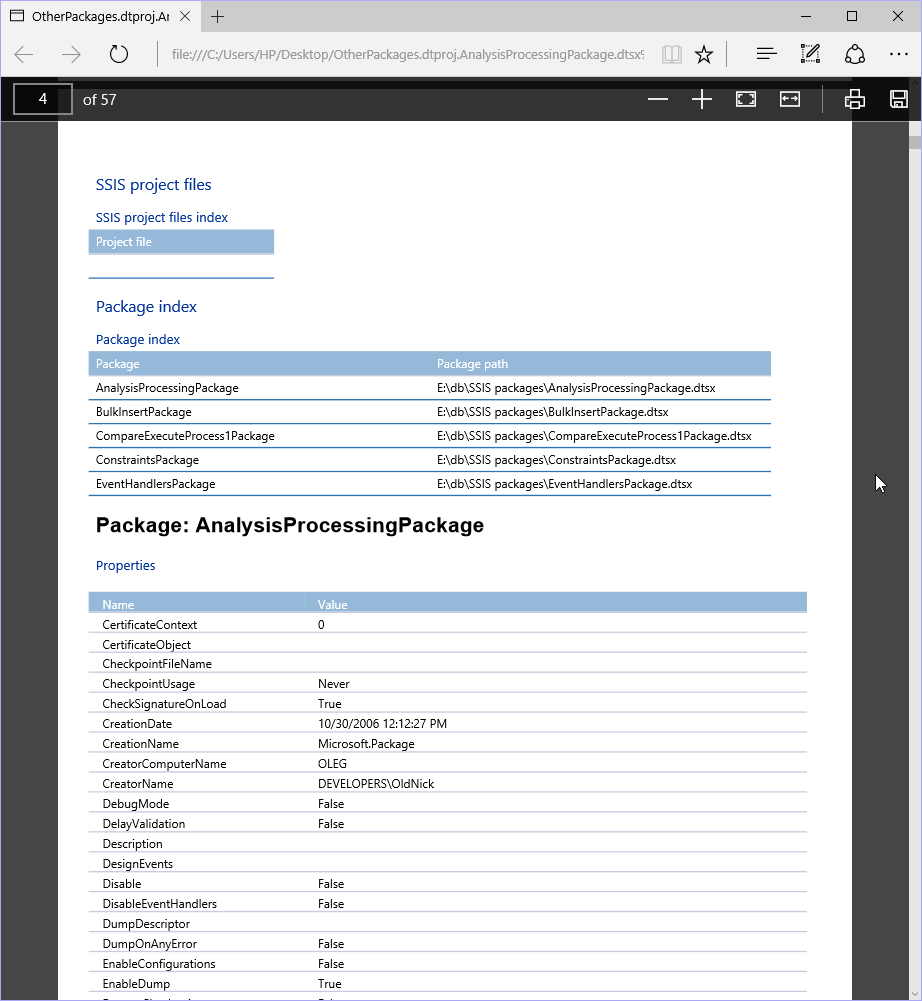Ssis Monitoring Tool

Problem are crucial to any SQL Server environment as they are created and scheduled to perform critical business and operational tasks. As a database administrator (DBA) or developer, it is our responsibility to monitor SQL Server Agent Jobs to make sure they are running successfully, without any failures. SQL Server provides several methods, such as job notifications, SQL Server agent alerts, etc., that can help monitor our SQL Server Agent Jobs, so that you can get an email or alert when a particular SQL Server agent job fails.
Sql Server monitoring is CRUCIAL to ensuring your Database is running at its Best Performance and is highly available - We review the Top Tools & Software! To avoid database downtime during the workday, many DBAs have to do extra work on nights and weekends. Volkswagen Headline Font Free. SQL Server monitoring tools offer one way to take back some of.
However, the problem with these monitoring solutions are that they are dependent on, and if you are working for an organization where you are prohibited for enabling the Database Mail feature on a SQL Server instance, due to data security reasons, then the only option is to check the status of SQL Server Agent Jobs by manually reviewing the job status in Job Activity Monitor, which is a time consuming task, especially if you are managing a large number of SQL Servers. In this tip, I'll show you how you can design your own centralized custom solution using that will email a report that contains the list of all SQL Server Agent Jobs across all of the SQL Servers that failed in the last hour. Solution Before I start talking about our custom solution, I will first discuss where SQL Server stores SQL Server Agent Job history information and show you different ways for viewing it in SQL Server. Viewing SQL Server agent job history information As we know, SQL Server Agent stores history information for in the. The information about SQL Server Agent Job history is actually stored in the table of the msdb database. You can view the history of SQL Server Agent Jobs and job steps through the Job Activity Monitor in or by directly querying dbo.sysjobhistory table.
Here are the steps to launch the Job Activity Monitor page in SQL Server Management Studio: • In Object Explorer, expand SQL Server Agent. • Double-click Job Activity Monitor. The following summarizes information for all jobs: • Name • Enabled • Status • Last Run Outcome • Last Run (time) • Next Run • Category • Runnable • Scheduled • Category ID • To view information about individual job steps, right-click the job and choose View History. Detailed information about the outcome of each step is displayed in the Log File Viewer.
• Click the Close X in the top right of the interface to close the Log File Viewer. • Click the Close X in the top right of the interface to close Job Activity Monitor. Advantages And Disadvantages Of General Purpose Application Software here. Designing our custom solution for monitoring and alerting on failed SQL Server Agent Jobs across multiple SQL Servers For the purpose of this tip, create a database called UtilityDB on your centralized SQL Server instance, where you want to save the failed SQL Server agent jobs information. I used the following Transact-SQL script to create this database. CREATE DATABASE [UtilityDB] ON PRIMARY (NAME = N'UtilityDB', FILENAME = N' UtilityDB.mdf', SIZE = 4160KB, MAXSIZE = UNLIMITED, FILEGROWTH = 1024KB ) LOG ON (NAME = N'UtilityDB_log', FILENAME = N' UtilityDB_log.ldf', SIZE = 1040KB, MAXSIZE = 2048GB, FILEGROWTH = 10%) GO Next, create the following two tables in the UtilityDB database: • SSISServersList: The table stores the name of each SQL Server you want to monitor for failed SQL Server Agent Job information. • SQLAgentFailedJobsInfo: The table will store the information about all SQL Server Agent Jobs that failed across all of the SQL Server instances. To create the tables, execute the following Transact-SQL script.
Rename the ADO.NET connection as UtilityDB_ADOConnection. Next, add the dynamic OLE-DB connection to the package, which allows us to connect to the different SQL Server instances. This connection is passed with SQLServer_Connection variable that contains the SQL Server instance name from the SSISServerList table, which was created earlier. Rename the connection to Dynamic_SQLServerConn.
To do so, right-click Dynamic_SQLServerConn OLE-DB connection and then choose Properties from menu. In the properties window, first change the initial catalog to master, and then click the ellipse (.) box next to expressions property, and specify the following expression for ServerName property.
@[User::SQLServer_Connection] 3: Defining SQL Server Integration Services Package Tasks 3.1: Configuring '01 - EST Truncate Failed Jobs table in UtilityDB' - Execute SQL Task in SSIS Add an 'Execute SQL Task' to the Control Flow tab. Double-click the task and configure properties in the 'General' page of the task as follows: • Rename 'Execute SQL Task' to '01 - EST Truncate Failed Jobs table in UtilityDB'. • Set 'ResultSet' property to 'None'.
Comments are closed.